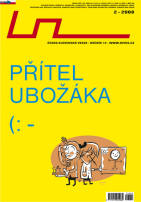| Umělec 2008/2 >> Punks not dead | Просмотр всех номеров | ||||||||||||
|
|||||||||||||
Punks not deadUmělec 2008/201.02.2008 Tony Ozuna | review | en cs de es |
|||||||||||||
|
Punk. No One is Innocent—Art—Style--Revolt
Kunsthalle Wien 16 May—7 September, 2008 In Eastern Europe, or in any non-English speaking country for that matter, punks must take pride in writing “Punks Not Dead” without the apostrophe after the “K,” as it should be. Without the grammatical correction, on their leather jackets, t-shirts and graffiti on the walls, the slogan takes on a Dadaist appeal. The exhibit “Punk—No One is Innocent—Art—Style--Revolt” at Kunsthalle Wien must have had this in mind as it is a dedication to the original spirit and ideals of punk rock. Curated by Thomas MieBang, the exhibit shows the art of punk musicians, and more successful artists spawned from three major punk scenes: London (in the mid 70s), New York (in the mid to late 70s), and Berlin (in the early to mid 80s). Punk—in its purest form—was all about shock and abrasiveness, but with a particular style. Dressed up in sexy fish-net stockings, with pins stuck into tattered clothing (not skin), and with peroxide-white hair done up extravagantly to be mashed down in a violent ruckus. Punk was also about unprofessionalism—auteur artists prancing around on stage, out of tune, out of timing, playing too fast, and out of their heads—and equally so for those snarling and dancing in the audience. Even the part-time punks…rebelling against their careers or lack of career opportunities, but on weekends only. Punk was mostly about music, but the exhibit downplays this in favor of punk’s association with negation, or “as a door of perception through which one enters a realm of encoded messages: signal to noise.” And so with music only in the background and, in the worst cases, listened to through headphones at unreasonably low volume levels, there are only the visual images of artists like Vito Acconci, Martin Kippenberger, Robert Mapplethorpe, David Wojnarovicz, and over 20 others as well as art groups or collectives to confront (or not) the audience. But the lesser known artists, and mostly women, hit hardest in this show, getting closest to the attitude, power and fury of the music with their visual art. Lynda Benglis standing naked, wearing new-wave sun glasses, and holding a huge (erect) dildo penis sticking out of her vagina used this image as a full-page advertisement in Artforum in 1974, not only causing an editorial row about “vulgarity,” but offending the Feminist movement in America (all with one provocative action). Genesis P-Orridge has “Tampax Romana” (1976) a small recreation of Venus de Milo with used tampons; scenes from his performances with Cosey Fanni Tutti are more sensational, with her as live-nude model beside her projected photo documentation of actual work for porno magazines. As co-founders of the UK group Throbbing Gristle, P-Orridge and Cosey Fanni Tutti formed their group out of a performance for the opening party of “Prostiution COUM Transmissions” at ICA in London, 1976; the motto of the group was “the future of music belongs to non-musicians.” Ann Magnuson is a NYC non-musician, performance artist who took this most to heart; her “Made for TV” video is a fifteen minute assault of American junk TV of the era, taking split-second clips/scenes from surfing the boob-tube, when cable was just beginning, and thus the mash-up of evangelical appeals, horror, porn, and war scenes, broadcast news, sitcoms and serials, interspersed with Magnuson in various wigs and personas is a memory head-rush. It is too bad her later collaborations with Kramer for the group Bongwater were not included---understandably since that music is solid-steel rock. The NYC punk singer Lydia Lunch is the star of Richard Kern’s film “Fingered” in an isolated corner, projection room—entry restricted to the ages of 18 and over. Lunch plays a slut-punk rocker with a macho, hippie-dirtbag for a partner, driving around the empty streets and hills of Los Angeles; she despises him, but he fucks her hard and many times in the film. When they both try to rape a younger girl, who they have picked up hitch-hiking there is a scene that is a punk milestone for its raw depiction of sexual brutality. Einsturzende Neubauten is the Teutonic compliment to Throbbing Gristle with their intense noise made on scrap yard metal, and Berlin Super 80 collective provides hard, multimedia art to match the noise of Berlin’s more techno-punk scene; in this milieu, endart is another multimedia collective that admits their work was less about creating new art (new images or iconography) then about creating a new attitude toward art. From a book of essays reminiscing about the Los Angeles punk scene and its art in the early 1980s (preceding the Berlin scene, by the way, with bands like Savage Republic, X, Black Flag and Fear and artists like Richard Pettibone), Kristine McKenna writes: “It’s comforting to remember that somewhere, at any given point in time, there’s a cluster of people shaking their fists at society and screaming “fuck you.” The dates, places, and guilty parties may change; but the sentiment burns on, shining and immutable.” Let’s not kid ourselves. Punk died in its original form, because it sold out—in London, New York, Los Angeles, Berlin, and beyond. However, the purpose of “Punk—No One is Innocent—Art—Style-Revolt” isn’t an effort to revive it, nor to give it a proper burial; instead, it is to keep the original white riot sentiment burning, “shining and immutable,” in all its noise and glorious performances.
01.02.2008
Рекомендуемые статьи
|
|||||||||||||











Комментарии
Статья не была прокомментированаДобавить новый комментарий